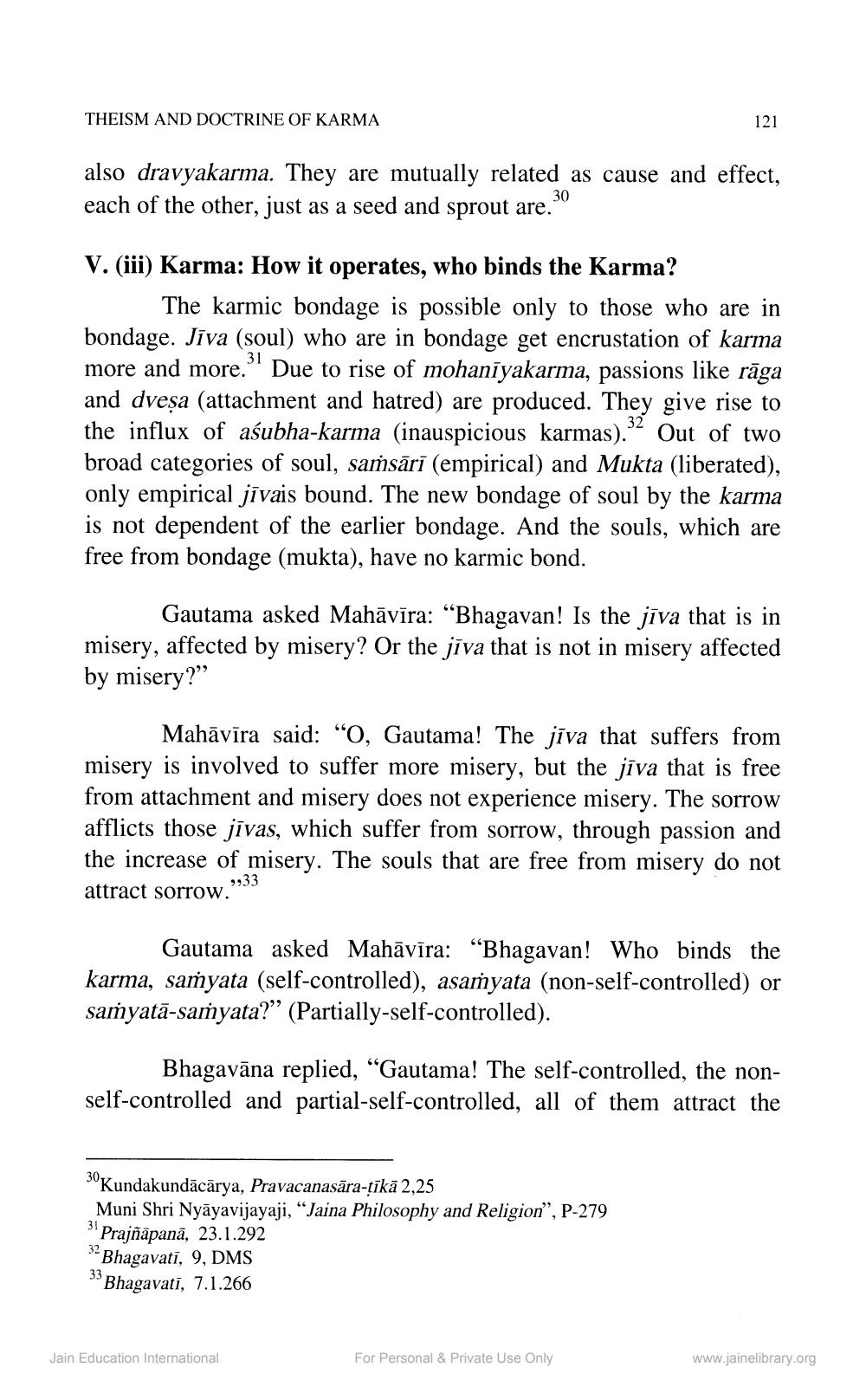________________
THEISM AND DOCTRINE OF KARMA
121
also dravyakarma. They are mutually related as cause and effect, each of the other, just as a seed and sprout are."
V. (iii) Karma: How it operates, who binds the Karma?
The karmic bondage is possible only to those who are in bondage. Jīva (soul) who are in bondage get encrustation of karma more and more." Due to rise of mohanīyakarma, passions like rāga and dveșa (attachment and hatred) are produced. They give rise to the influx of aśubha-karma (inauspicious karmas). 92 Out of two broad categories of soul, saṁsārī (empirical) and Mukta (liberated), only empirical jīvais bound. The new bondage of soul by the karma is not dependent of the earlier bondage. And the souls, which are free from bondage (mukta), have no karmic bond.
Gautama asked Mahāvīra: “Bhagavan! Is the jīva that is in misery, affected by misery? Or the jīva that is not in misery affected by misery?”
Mahāvīra said: "O, Gautama! The jīva that suffers from misery is involved to suffer more misery, but the jīva that is free from attachment and misery does not experience misery. The sorrow afflicts those jīvas, which suffer from sorrow, through passion and the increase of misery. The souls that are free from misery do not attract sorrow.”
Gautama asked Mahāvīra: “Bhagavan! Who binds the karma, saṁyata (self-controlled), asaṁyata (non-self-controlled) or samyatā-samyata?” (Partially-self-controlled).
Bhagavāna replied, “Gautama! The self-controlled, the nonself-controlled and partial-self-controlled, all of them attract the
Kundakundācārya, Pravacanasāra-tikā 2,25 Muni Shri Nyāyavijayaji, “Jaina Philosophy and Religion”, P-279 Prajñāpana, 23.1.292 Bhagavati, 9, DMS "Bhagavati, 7.1.266
Jain Education International
For Personal & Private Use Only
www.jainelibrary.org




